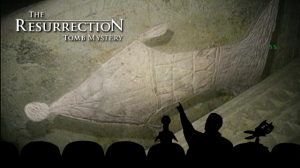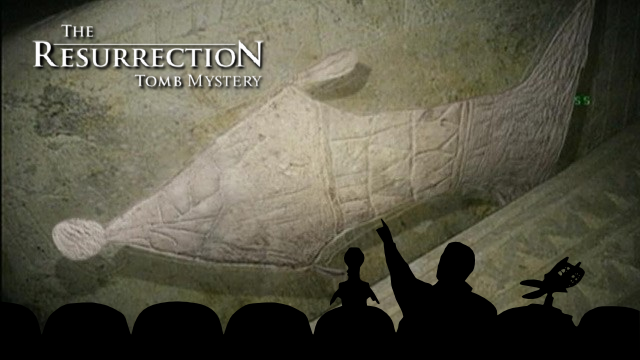 |
| (I’m considering making this image a series header. 🙂 ) |
One of the most common apologies that Dr. Tabor and Simcha Jacobovici have been using in blog comments is that scholars cannot make up their minds about what the image is; therefore, their interpretation somehow has some more possible merit.
Is it a krater? Is it an amphora? Is it an unguentarium? Is it some generic vessel? No one knows! — There is no consensus — so it could be a fish.
Allow me to explain it with metaphors: Two of them in fact.
One automotive, the other an older one I’ve used before, but in a much more explicit context.
For the first, please absorb this image (props to go my eldest daughter):
Let us imagine that when this image was first noticed 30 years ago, a newspaper reported it being some sort of Sedan automobile.
The newspaper article is forgotten and suddenly this very year Simcha Jacobovici and James Tabor announce to the world that, “We’ve found this inscription, and it’s a fish.”
Needless to say, this causes a lot of ruckus.
Bob Cargill remarks, “What? It’s a Chevy.”
Mark Goodacre says, “Come on. It’s a VW, or some sort of German 2-door.”
Tom Verenna says, “Really? I think it looks more like a Nissan Fiargo.”
Tabor and Jacobovici, after listening in for a bit, then say here and there, “See? You guys can’t agree with one another. It’s a fish.“
This is where a little more puzzlement and disbelief sets in. Everyone else does not quite understand, not just how they could come to such a conclusion, but also how they could say that no one could make up their minds.
After all — a Sedan, a Chevy, a VW, a Fiargo — they’re all cars. Where the make and model are nuances, the clear consensus is that it’s an automobile.
Simply put: This apology that there is “no consensus” cannot and does not stand upon its own merits.
Now to the second metaphor. I’ve shared this one with you before, so bear with me:
When you watch this video *this* time around, substitute the following phrases in your mind, one-to-one, melodrama and all:
“Island” = “Ossuary”
“Bunny” = “Nephesh Tower”
“Scary” = “Theologically Traumatic” or “Early Christian”
(The former I admit, is more Simcha’s phrase. 🙂 )
Peace,
-Steve


Hi,
Came across your blog just a few days ago and really enjoy it!
Now, I have a question unrelated to this post: what about the OT and NT phrase “in the name” or speaking of God’s name (“hallowed be your name”). I am under the impression that it is an idiom from Hebrew speaking about the whole person carrying that name?
Is that correct?
Any comments very appreciated.
Mikael Stenhammar, Sweden
This comment has been removed by a blog administrator.
@Mikael – Names in Semitic languages (Hebrew, Aramaic, Arabic, etc.) carried a number of meanings, most of which are either shared, or have bled into English and other languages since.
“In the name of” generally bears the connotation of “in the authority of,” so the idea of doing something “in the name of God” is to claim God’s authority for one’s actions.
This idiom is also applied to other authorities such as, “In the name of the king, I charge you to lay down your arms.” == “I am demanding under the king’s authority for you to surrender.”
“Hallowed be your name” follows in the same vein, but also bears the connotation of reputation or respect. Thus, “Hallowed be your name” is more or less == “May you be respected.” etc.
Hope this helps. 🙂
Peace,
-Steve